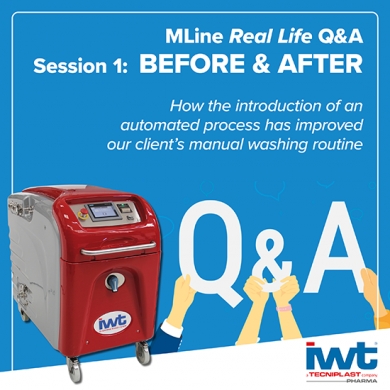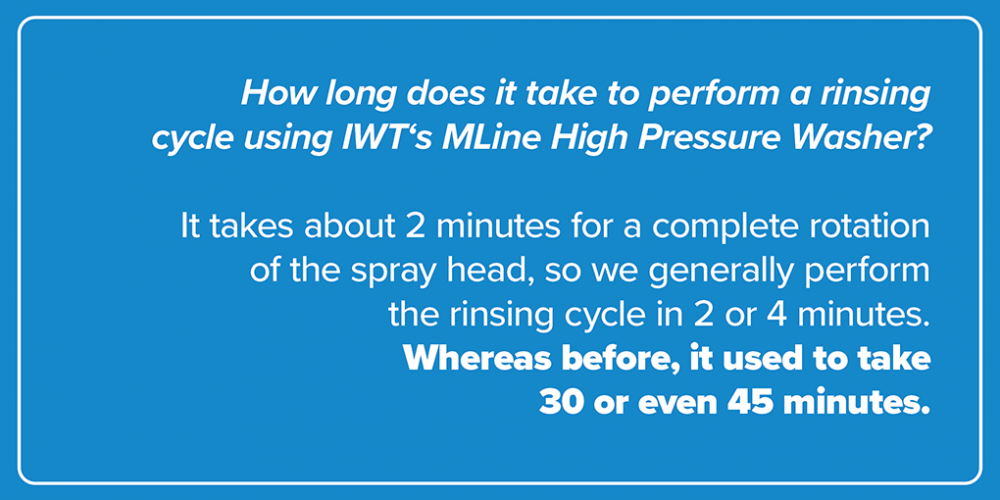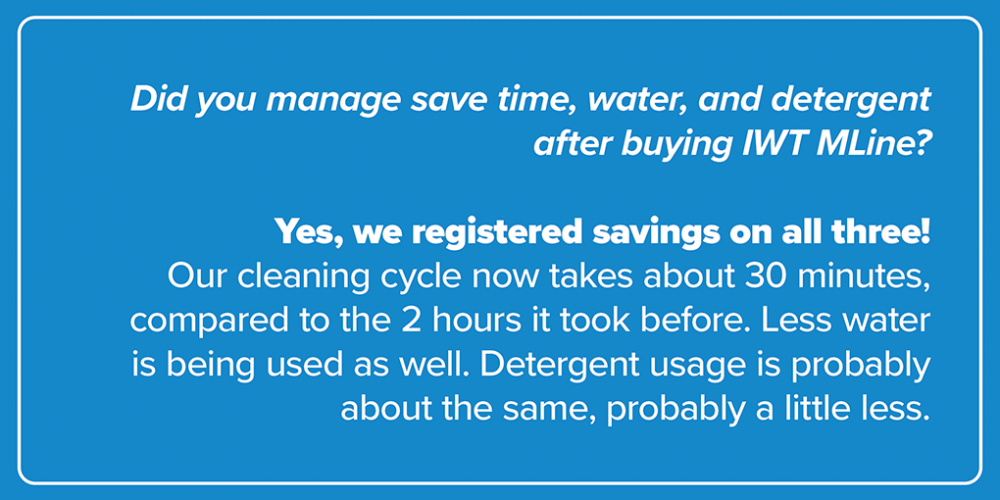

From the meeting between a customer interested in our MLine and an established user of IWT Mobile High Pressure Washers come the most interesting, genuine, and reliable Q&A!
Thanks to @Richard Brunetti (@STEQ Sales Rep) and to our IWT Area Manager @Luca Fumagalli for allowing our customers to share doubts, questions, and experiences in a transparent and enriching exchange.
We are happy to share this review today, as direct user experiences are always the best references – and we assure you that the feedback provided has not been influenced or modified in any way by us, as we firmly believe that transparency and honesty are the keys to a successful and long-lasting collaboration.
Our client is a rapidly expanding biotechnology company with a 200,000-square-foot GMP manufacturing facility located in Northern California specializing in critical reagents and custom solutions for bioprocessing, bioproduction, vaccine production, and diagnostics. Their product range includes cell culture media, molecular biology reagents, protein expression systems, antibiotics, and biochemicals used in research laboratories and bioprocessing facilities.
In this first post, we talk about "before and after" and how the introduction of an automated process has improved our client’s manual washing routine.
Enjoy reading!
And if you have any other doubts or curiosities, please write to us: we will be happy to answer you!

1. How were your tank cleaning processes before implementing MLine technology? Were they manual, or did you have a type of CIP?
We used CIP methodologies to clean all our tanks (320 and 150L) by completing multiple rinses and washes using a small pump and spray ball, but at very low pressures. Then, the tank would be steam cleaned, and we eventually performed a final rinse. It was quite a long process.
2. How long did these cleaning processes take? Did the nature of the product affect them?
It took around 2 hours to clean one tank. No, the nature of the product did not affect the cleaning process due to the extensive rinses performed.

3. Usually, our cleaning process uses the same methodology as follows: pre-rinse, cleaning, rinse, sanitization, and rinse again. But sometimes, we must repeat the rinse cycle. How many loops of rinse did you have before IWT equipment?
We had a very similar routine. I believe we were doing 3-4 rinses.
4. With IWT equipment, does the need to repeat the rinsing cycles persist?
Yes, we continue to repeat the rinsing cycles to ensure thorough elimination of any traces of detergent. It takes about 2 minutes for a complete rotation of the spray head, so we generally perform the rinsing cycle in 2 or 4 minutes. Whereas before, it used to take 30 or even 45 minutes.
5. Did you manage save time, water, and detergent after buying IWT MLine?
Yes, we registered savings on all three! Our cleaning cycle now takes about 30 minutes, compared to the 2 hours it took before. Less water is being used as well. Detergent usage is probably about the same, probably a little less.